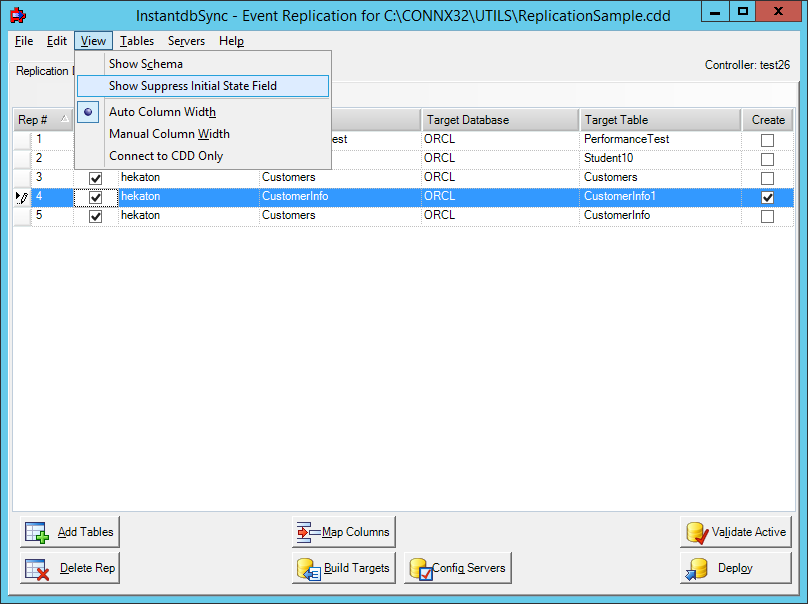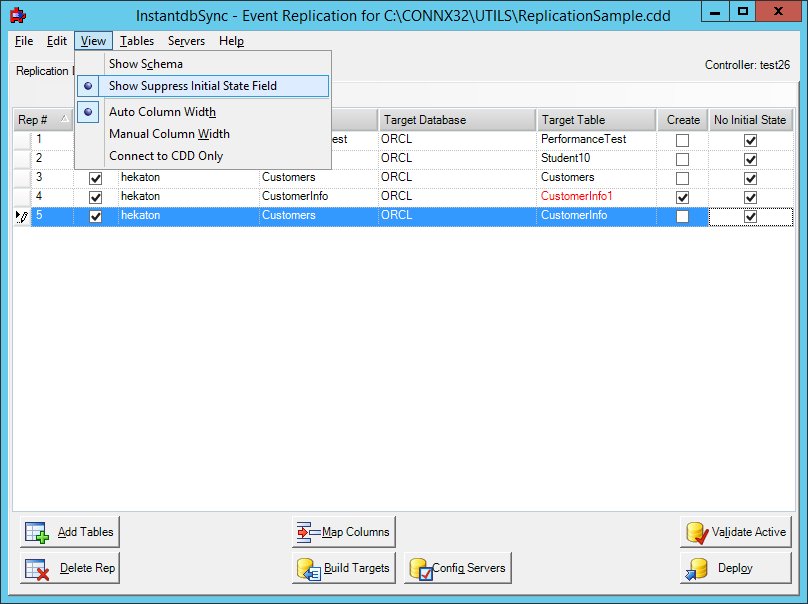Suppressing an Initial State
|
Suppressing
an Initial State includes:
Suppress an Initial
State if:
-
An
initial state has already been performed and the replication
has been undeployed
-
The target table has been synchronized with
the source with an outside tool
-
The system experienced a crash and you need
to bring replication back on-line as soon as possible and
you can tolerate some inconsistencies between the source and
target tables.
Important
note: Suppressing an initial state is an Advanced
function and should only be done if you can guarantee that the
target table is an exact
copy of the source table. If the initial state process is
not done, it is possible that the source and target tables will
not contain the same records and errors may occur during the normal
replication process. If this occurs, it is strongly recommended
that an initial state be performed. In the case of recovering
after a system wide failure, it is possible that the Replication
Server will be unable to recover its internal configuration files.
In this case a redeploy is required. If the initial
state is suppressed at this time, it is strongly recommended that
a manual initial state
be performed as soon as possible.
|
To prevent an Initial State from occurring when a replication
is deployed, an advanced feature called No Initial State must be activated.
To activate this feature, go to the View Menu on the Replication
Design tab and select Show Suppress Initial State Field.

A new column named No Initial State will now be displayed
on the right side of the screen.

Check this box for each replication you wish to suppress
the initial state for and press the Deploy button. After the Deploy,
no initial states will occur for the selected replications. After
the deploy, any transactions that occur on the source table will be replicated
to the target. If the target table is not in sync with the source
table, errors will occur.

